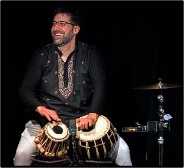
Assessing creative work should focus on encouraging and supporting your student’s growth and development as a young artist. It is important to distinguish between the reflective, constructive criticism of the actual work a student is creating from the effort, understanding, and focus students demonstrate while creating that work. In other words, our responsibility as teachers is to assess the student’s work, not their art. But before we talk about our role of assessment as teachers, we should also address the important ability for students to self-assess their work.
“We are our own worst critic” is a common phrase that we hear across the board that applies to anything from the style of our clothes, to the food we make, to the art we create. I like to take a different approach and say, “We are our own most valuable critic.” It doesn’t roll off the tongue quite as well, but it is such an important distinction, especially as it applies to the creative process. Our view of ourselves shapes who we become in life. In fact, the opinions of others matter little unless we adopt them as our own. For this reason, when I am talking to a student about their work, I rarely comment on anything that has to do with how “good” their piece is. As a guide, I ask the questions that focus on the value and quality of their work as they see it. I find myself constantly probing the process and inner thoughts of the artist and avoiding the art itself. Here are some examples of questions that can help lead students to taking ownership of the process:
“How much time have you spent working on this?”
“Did you struggle at any point in making this work?”
“Did you collaborate with others to make this work?”
“Do you have a favorite section of this piece?”
“Is this your best work?”
“Would you like some tips or advice on how to make it better?”
These questions lead to rich discussions about where students are in their process. There is, however, little to no discussion about the quality of the work other than the positive feedback that a piece may receive on our “Sharing Days”, and that, importantly, comes from fellow students.
On “Sharing Days” students have the option to share their work with the class. We listen to the piece, offer positive feedback and suggestions and sometimes even edit or add to their music on the spot. As the teacher, it is my duty to make sure the comments and feedback are positive, which is usually not very difficult. In a creative culture, the act of sharing your unfinished work with your peers is an act of courage and bravery. I make sure the students know this going in. So, any piece that is shared is done with this positive attribute attached to it. This creates a safe environment for sharing what is otherwise a very vulnerable piece of yourself, which is your own work.
These “Sharing Days” foster collaboration and allow students to see what their classmates are up to. They quickly become a favorite day for both me and my students. As a teacher, these Sharing Days give me insight into my students’ work process. They allow me a very personal starting point to talking about music, which ultimately adds meaning to all of my “regular” music class activities.
As the creative culture develops over time, the benchmarks for success must change and adapt. In the beginning, my main goal for the students was that they knew how to access the creative tools at their disposal. I would issue challenges aimed at introducing them to all the various apps and concepts such as beatmaking, sequencing, MIDI note editing, recording with a mic, etc. I created checklists to help them become familiar with the processes they would then use to freely create with. As they became comfortable with the process, their musical ideas could more easily grow from concept to reality.
Students who are technically proficient blaze through their checklist and begin creating right away. It is important to note that the challenges and checklists I provide are to get them started creating, so when I hear them say “I finished the checklist, what should I do now?”, my answer is always “Create!” take what you know and make some music. If the task is to make a beat and they figured it out in 5 minutes, then the next part of the challenge is to make 10 beats. In a creative environment, there is no downtime, only more time to create. This allows me to work with students who are not so proficient and are struggling to get started.
It is important to remember that assessing creative work is all about the process and not the work itself. There are quantitative measurements such as time on task, and demonstration of technological understanding. There are also more qualitative goals, such as the ability for students to speak to the work they have created with key vocabulary, and reflections on their process. Whether you allow for more open-ended creation, or provide specific guidelines and parameters for creation, feedback and constructive criticism are an essential component of the process that forges the path for individual growth as an artist. If we as teachers take care in providing these measurements and criticisms, we are helping our students to face creative challenges of any kind.
_________________________________________________________________________________________________________
 In addition to John Churchville’s 17 years in K-12 music classrooms, he is a Grammy award winning tabla player living in Ann Arbor and teaching at Pattengill Elementary. John got his start in music in Marquette then moved west to attend the esteemed California Institute of the Arts where he earned a degree in World Music Performance. He has since earned his Master’s in Music Education from the University of Michigan. John developed a nationally recognized and award winning elementary music program with a focus on student ownership, creativity, and technology integration. John serves as the MACC Regional Lead for Region 9 of the Michigan Regional Arts Education Networks coordinated by MAEIA, the Michigan Arts and Culture Council, and local arts educators and ambassadors. John has forged a unique path in both the music scene and in music education.
In addition to John Churchville’s 17 years in K-12 music classrooms, he is a Grammy award winning tabla player living in Ann Arbor and teaching at Pattengill Elementary. John got his start in music in Marquette then moved west to attend the esteemed California Institute of the Arts where he earned a degree in World Music Performance. He has since earned his Master’s in Music Education from the University of Michigan. John developed a nationally recognized and award winning elementary music program with a focus on student ownership, creativity, and technology integration. John serves as the MACC Regional Lead for Region 9 of the Michigan Regional Arts Education Networks coordinated by MAEIA, the Michigan Arts and Culture Council, and local arts educators and ambassadors. John has forged a unique path in both the music scene and in music education.
Images courtesy of John Churchville.
Click here for a Printer friendly version of this article.
Leave a Reply
You must be logged in to post a comment. Don't have an account? Register Here.